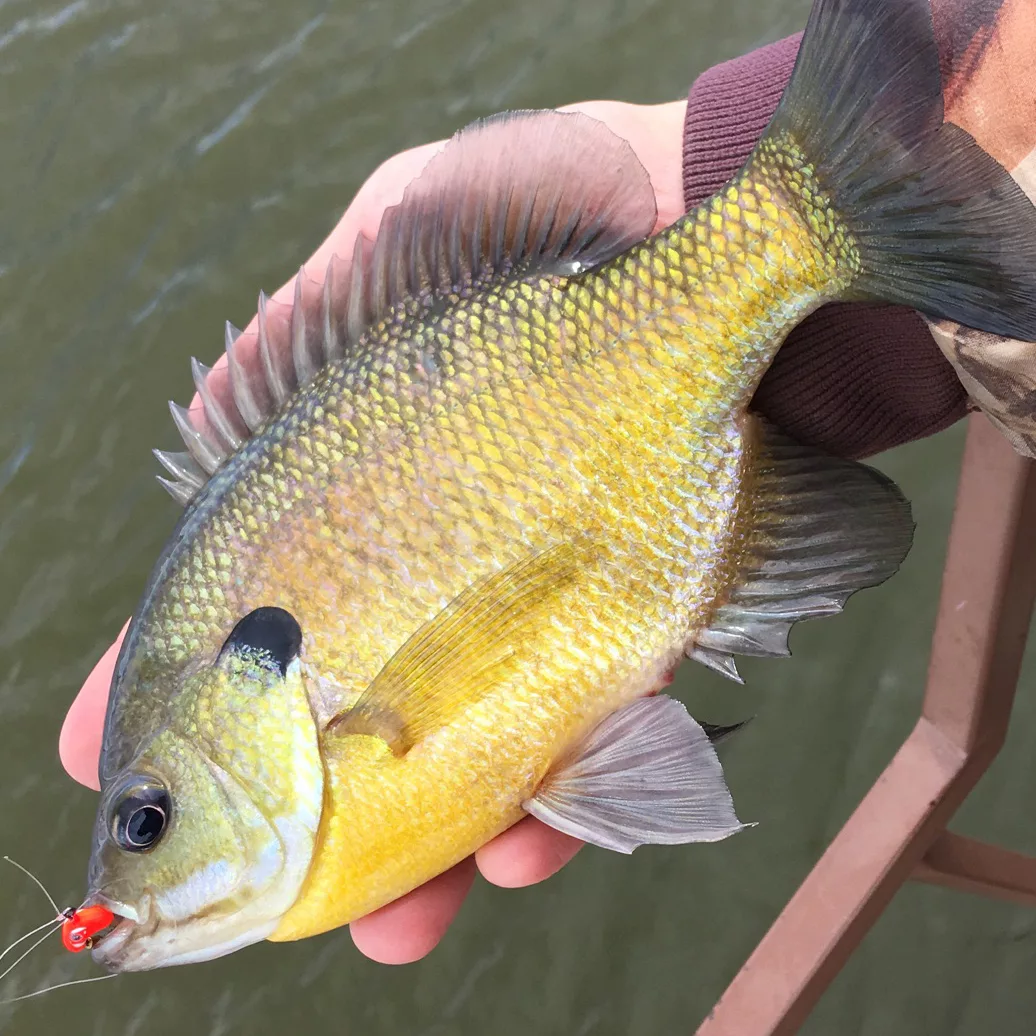
Bigger bluegills often require larger baits and a bit of research to find those lakes where they’re most likely to be present. Simonson Photo.
By Nick Simonson
Bluegills are America’s fish. They’re found in freshwater from sea to shining sea and provide fast fishing all summer long. They don’t discriminate based on bait, as they’ll take a gob of nightcrawler speared on a gold hook as readily as they’ll inhale the fanciest fly. They taste great coming out of the basket of a hot oil fryer or when dressed up as the main ingredient in any fancier fish dish. They’re generally abundant as well, found on many lakes and making up the primary panfish population in most waters.
Catching truly big bluegills, however, can be challenging. After all, in a population of panfish that are easily targeted and where large specimens are a true prize, they can be difficult to locate and sometimes hard to get to with a school of smaller ones to sort through. However, with a bit of research, adjusting locations and changing tactics to cater to bigger bluegills, chances are that the largest sampling of America’s fish can be yours this season.
1. Do Your Research. Lakes and ponds harboring big bluegills are often sleepers. They don’t get the pressure from the walleye or bass crowd. While they may not be talked about due to the heightened pursuit of their contemporaries these waters are still spoken of in whispers among fishermen, even in today’s era of social media. And those who do talk online about their awesome days on these waters – both public and private – bear a near pariah status after they click post. So don’t expect the close-knit cadre of bull busters to readily share their bluegill waypoints with you. However, cues like sampling reports from area waters can provide an overall clue as to where bigger bluegills can be found, and stocking reports of smaller waters often provide even better information. Looking back on those lakes filled with ‘gills five to seven years ago, and then perhaps left untouched, can suggest that a sustained population of bigger fish which have matured in that time are available for angling.
2. Deep and Deeper. In a water with a well-established population of bluegills, the bigger ones tend to be at the bottom of the school, lurking near the substrate below the first few lines of smaller fish that would be the target of any avian predator above, while having access to the bottom strata where much of their aquatic food source awaits. Use heavier jigs to target the bottom of a visible school, or when picking up a larger school of panfish on sonar. Use tungsten jigs and larger offerings to get down to bigger ‘gills faster and through the school of smaller fish to connect more often and keep the quality fish biting.
Additionally, consider looking for bigger bluegills out a bit deeper. They are survivors and a bit bigger than their shallower-holding contemporaries, meaning predation will have to come from a much bigger fish. These larger bull bluegills may be out deeper, or relating to a weedline further out, and need to be considered a bit differently than bluegills in general.
3. Find Balance. In waters with a good predator-to-prey balance, with enough big fish to keep the little fish in check, your odds of finding bigger bluegills increase. As bluegills are a species which is known for quickly overtaking a water where there are no apex predators like muskies, pike or bass, it’s not uncommon to see thousands of tiny fish that just don’t seem to get more than five or six inches in length, no matter how hard you look for something bigger. Take note of survey reports that show populations of predators present, especially largemouth bass over 18 inches, catfish around 30 inches, and pike nearing the 40-inch mark. These predators help consume many of the smaller bluegills and thin out the ranks, allowing the biomass of a water to better support bluegills growing to a larger size. A well-balanced water with predators and prey will be a place where bluegills of nine or ten inches (or more) will be more frequently encountered.
By looking into the factors that foster better bluegill populations and size structures in a given water, along with going where the bigger bluegills might be and giving them a larger bait with a faster drop, odds are increased that these bulls will be caught more frequently this summer and in seasons to come.
